Why Is My Dog Flinching All of a Sudden?
We love our dogs and want the best for them. So when you move to pet them and they suddenly flinch, it is worrisome.
What gives? Is your dog scared of you?
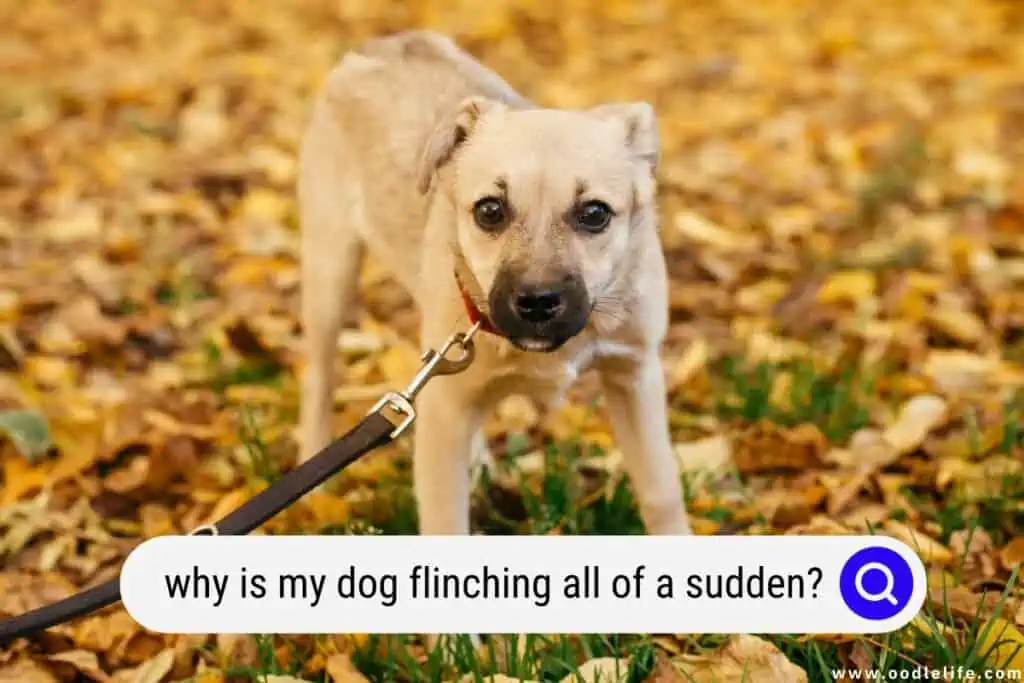
Flinching is a rapid, nervous movement due to shock, pain, or fear. Dogs can flinch when they are awake, or they can also do that when they are asleep. The sudden flinching in dogs while sleeping usually occurs because of a dream, like us humans who toss and turn when we are having a bad dream.
Flinching can also be a sign of a dog’s personality. Shy or poorly socialized dogs are more likely to flinch quickly in unfamiliar or stressful circumstances. However, it may also signify a more serious issue, such as minor seizures, vision problems, or stress from past abuse.
In this blog post, we’ll look at possible medical or behavioral issues that can cause a poor dog to flinch.
Causes of Flinching in Dogs
Flinching caused by medical conditions requires veterinary care and treatment. If you notice your dog suddenly flinching and the problem isn’t behavioral, it might be time to take your dog to a vet for a quick checkup.
1. Injury or Pain
It is one of the most common causes of flinching in dogs. Dogs’ conditions can cause illness or pain due to injury or a medical condition. Pain or injury can also occur in one or more body parts.
Here are some specific conditions that cause pain in dogs and cause them to flinch when touched:
Arthritis
Dogs suffering from arthritis tend to flinch when touched or moved. Arthritis affects one in five dogs and is common, especially in large breeds and older canines. Even though there is no cure for this illness, early detection and treatment can help your dog live a healthy, active life.
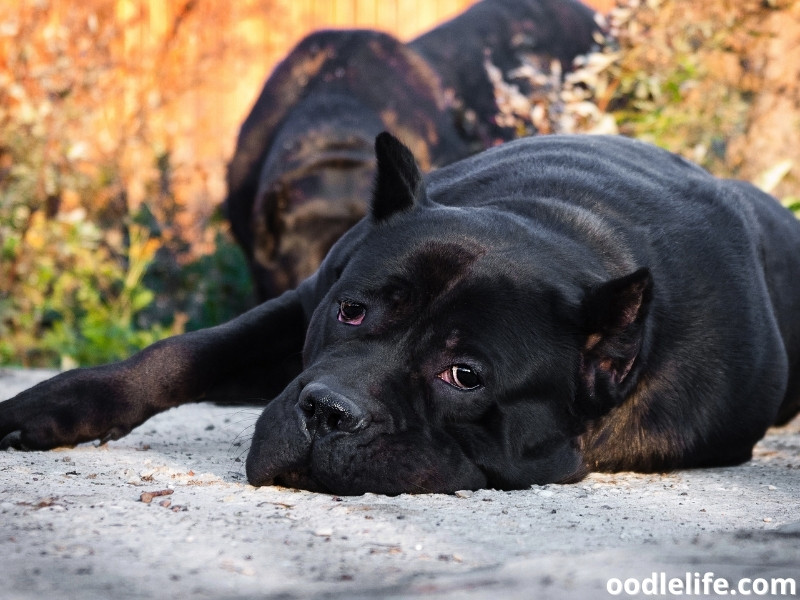
Some of the signs or symptoms of your dog suffering from arthritis are:
- Difficult and hesitant to get up.
- When standing, they position their hind legs closer than usual.
- The hind legs show signs of weakened and shrinking muscles.
- Difficulty climbing to high places such as stairs, chairs, or your bed.
- Lethargy
- Weight gain
- Yelping when they get up.
- Behavior changes such as irritability and moodiness.
Although this condition is very common in dogs, getting an immediate evaluation from a vet is very important. They will perform a thorough physical examination and can identify if any other conditions are causing similar symptoms.
Loss of appetite and lethargy are two other symptoms that may appear. Without knowing the cause and finding the right treatment, the pain they experience can increase and occur continuously. They can also be in pain throughout the day and avoid being touched or petted.
Injury
Domesticated dogs are skilled at hiding symptoms of discomfort and pain. As a descendant of the wild wolf, this skill is a tactic used to survive in the wild. But for domesticated dogs, there are some clues you can find to find out if they have an injury.
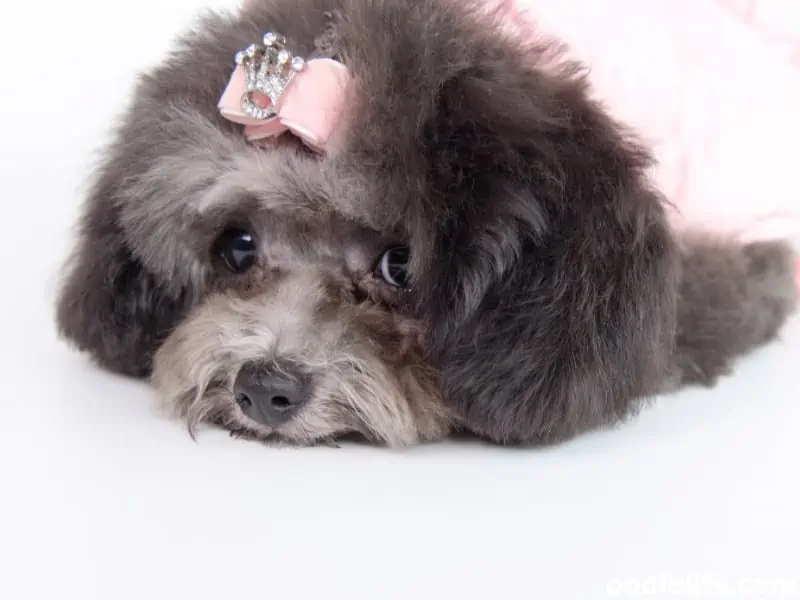
Flinching is one of the signs that your dog has an injury. Other signs include:
- Avoiding touch
- Reacting vocally or by crying
- Swelling
- Warmth around a certain area
- Redness at the injury area
- Panting
- Increased heart rate or breathing
- Lip licking.
2. Abusive or Traumatic Experience
If you recently adopted a dog and have noticed that he often flinches suddenly, you might want to look into your dog’s past more thoroughly.

Past trauma can result in sudden flinching in dogs. He will likely flinch when you approach or touch him in a way that can trigger memories of his prior traumas. This is a sign of fear and distrust, and dogs have excellent long-term memory.
If he was punished or mistreated in the past, they too can expect the same from you. Quick reactions to protect their bodies or hide can be why your dog suddenly flinches, even if you don’t intend to punish or persecute them.
If it is true that your adopted dog has experienced abuse in the past, try to always move slowly around them. When you want to pet your dog, approach from the front and don’t startle the dog with sudden movements.
You can also speak in advance to let them know if you will come close and pet them. You can also try limiting interactions with your dog to relaxing activities such as sitting together.
You might also notice this in dogs you’ve been with for a long time when your dog starts behaving unusually and flinches suddenly. But there are no signs of physical injury, so perhaps you should recall or investigate the last incident that may have resulted in this attitude change. Traumatic events can happen outside of your supervision, such as in daycare or with a caregiver while you are away.
Many other possibilities can traumatize your dog. For example, a new person is living with you, someone close to your dog who just left, or maybe you just moved house. Dogs can feel stressed when they are in a new place.
If so, ensure your pet has his familiar sleeping space, unpack all his favorite toys, and give him more time to adapt to a new place.
3. Eyesight Problems
In order to avoid something they can’t see well, dogs with vision issues often flinch. A dog may flinch suddenly due to eye diseases like PRA (progressive retinal atrophy) or cataracts. Your dog might have PRA if he flinches suddenly as he moves from bright light to shadow.
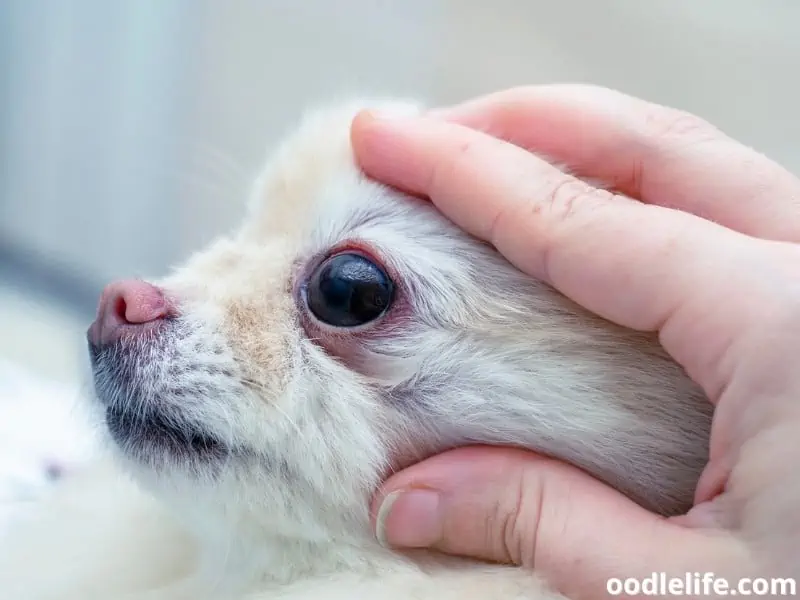
When dogs have PRA, their vision will start to decrease and fade, and they may eventually go blind. Cataracts cause cloudy vision in dogs, leading to blindness. Other symptoms that might indicate an eye problem include:
- Eyes appear cloudy, swollen, puffy, or red.
- Your dog often flinches or is easily startled.
- Unusually anxious
- Reluctance to climb stairs
- They don’t want to jump up on the bed or couch.
- They walk into objects .
4. Inadequate Socialization
Dogs that are not properly socialized from the time they are puppies grow up to be timid and lack self-confidence. They find adjusting to new environments difficult and do not desire to enjoy new experiences. Less social dogs will flinch when faced with or in new situations.
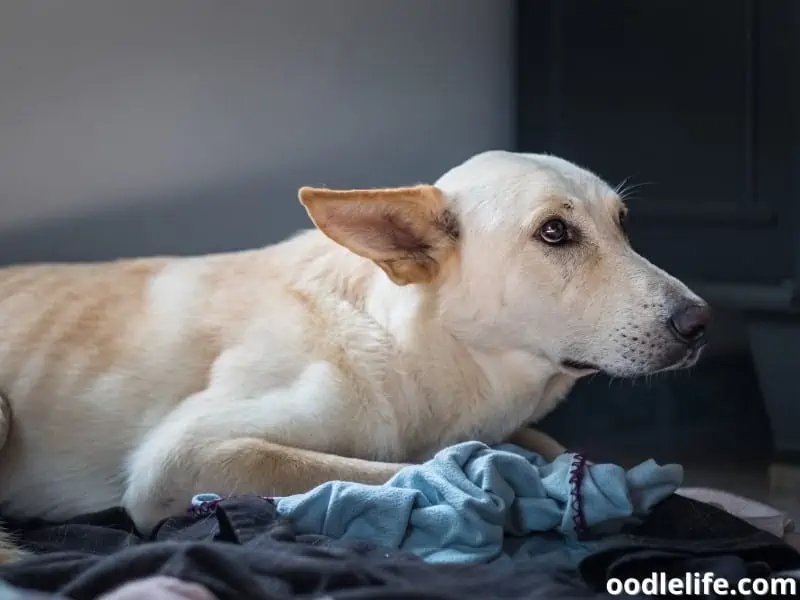
Early socialization is crucial so dogs can learn how to handle unfamiliar surroundings.
Socialization in dogs refers to a process called desensitization. It is a gradual process of exposing a puppy to new things they may encounter during their lifetimes, such as animals, objects, or new experiences. This process is done in a positive way while making sure the puppy considers this exposure fun.
In this process, puppies are also exposed to various textures, sounds and animal species, and humans across different races, genders, and ages. This exposure process should start early because dogs experience a critical period of socialization at this time. One study showed that puppies who were not exposed to humans before reaching 14 weeks of age would never develop a normal bond with humans later in life.
Provide socialization to your puppy from the age of three to two weeks. However, it would be safer if your dog gets the vaccine first and waits for about seven days after the vaccine, which will prevent disease and protect them from serious, often fatal illnesses like parvo and distemper.
5. Seizures
Flinching in dogs can occur due to mild seizures. The flinching caused by seizures might look mild, but if not treated properly, it can cause permanent damage to the dog. Seizure is a disturbance in brain function that occurs accidentally and temporarily.
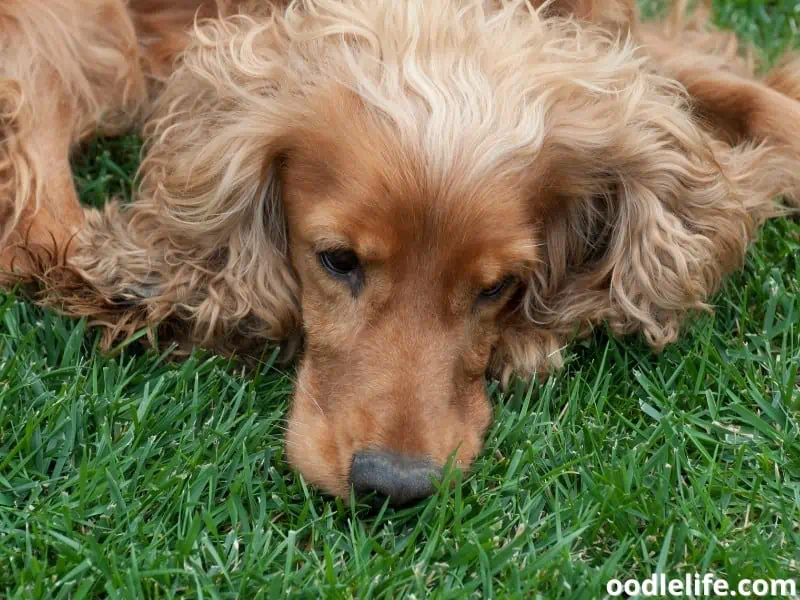
Seizures are a fairly common condition in dogs and are easily managed with medication.
Here are other symptoms of seizures in dogs:
- Strange motions in specific body parts
- Tremors last for a short while
- Tongue chewing
- Loss of consciousness
- Collapsing
- Tongue chewing
- Jerking
- Drooling
Dogs who experience seizures are unaware of their surroundings and can also pee or poop during seizures.
Here are the steps you need to take when your dog starts to flinch and turns into seizures:
- Do not touch their mouth or head, and remain calm.
- Don’t put anything in their mouth.
- Move any objects around that can hurt him.
- Seizures can cause dogs to overheat, apply cold water to their paws, or point a fan at them.
- Talk calmly to your dog without touching them.
After the seizure is over, take them to the vet. The vet will perform a physical examination to determine the cause of the seizures.
6. Disorientation
Disorientation in dogs can occur for many reasons, like when they are confused and do not know what is going on with them. So they flinch away from the surrounding objects. Even though it seems like a normal thing, a vet check needs to be done because this can be a sign of a serious condition like vestibular disease, so if your dog seems to be disoriented and confused, it’s worth a trip to the vet.
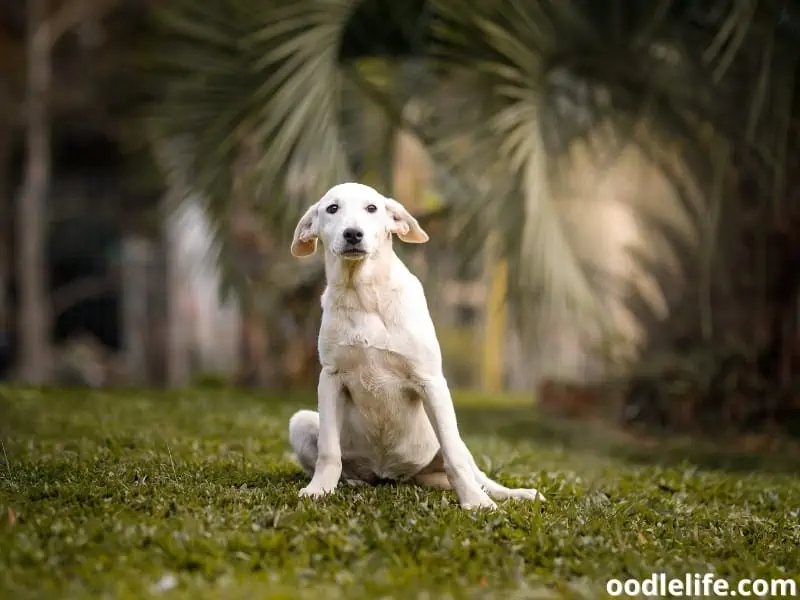
Final Thoughts
Although worrisome, your dog flinching away from you might just mean you surprised him. However, when in doubt, always bring your dog to the vet to rule out any medical conditions.